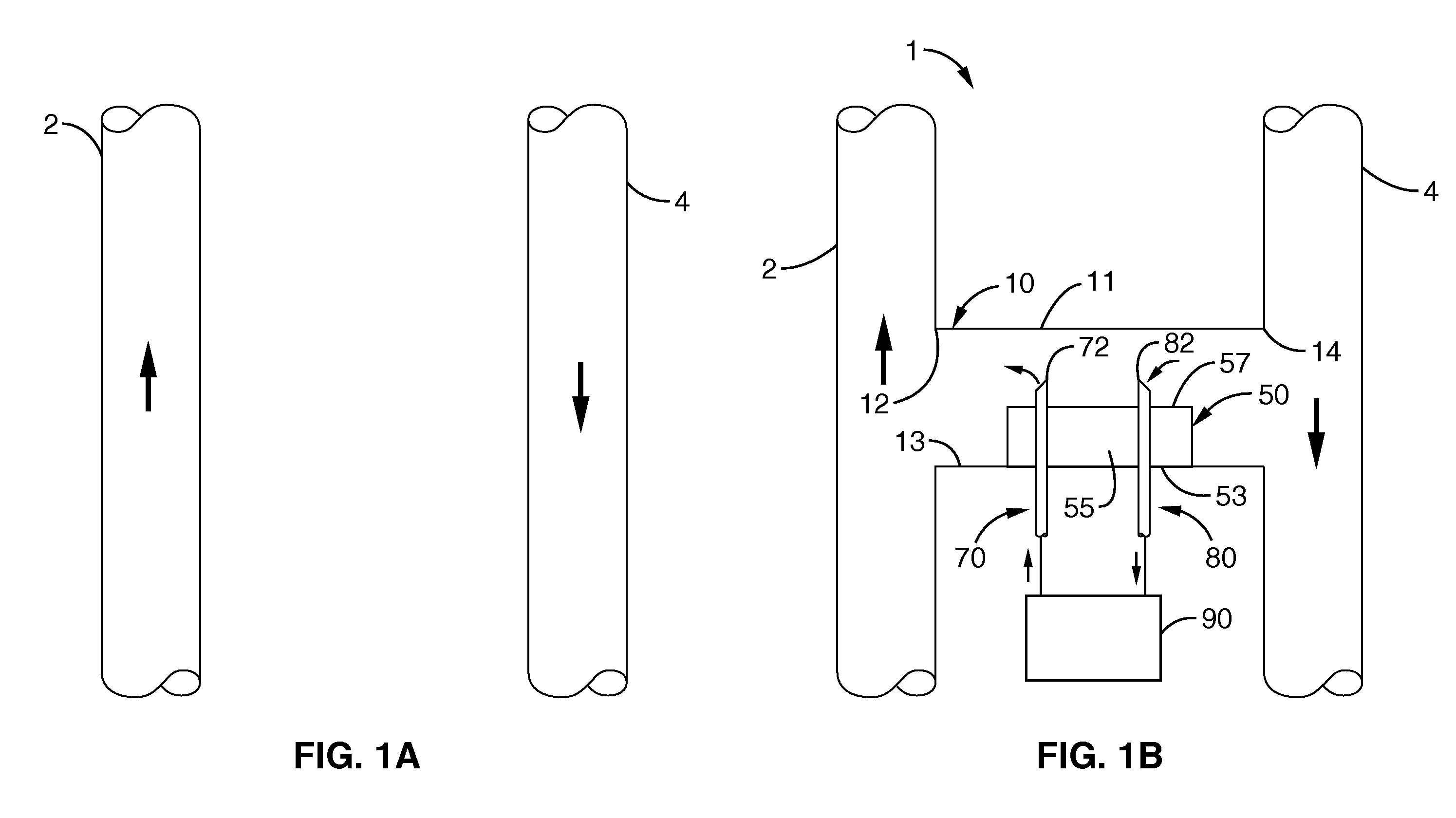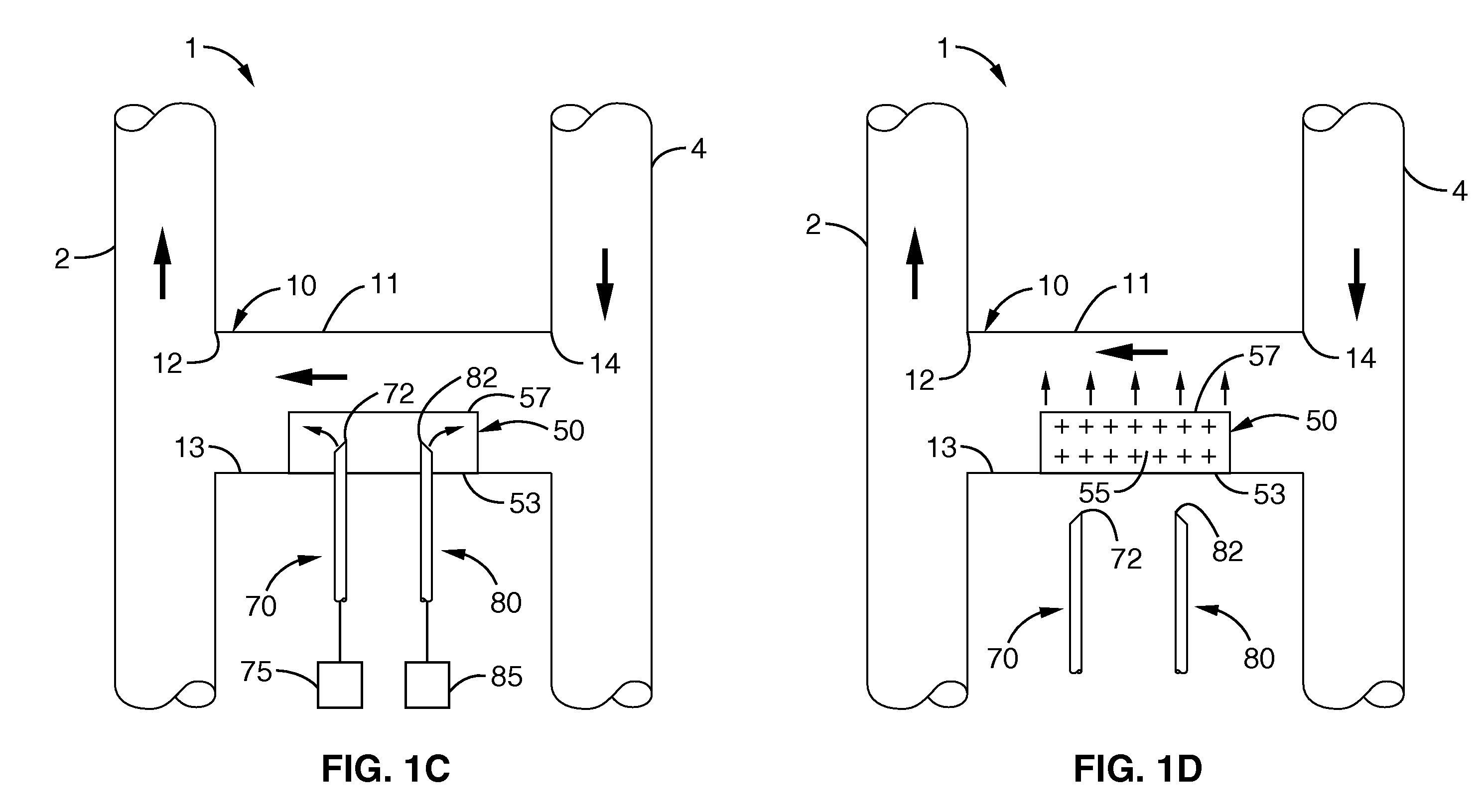Hemodialysis access with on-off functionality
a technology of hemodialysis and functionality, applied in the field of hemodialysis, can solve the problems of increasing the burden of modern society, the stenosis of the vessel, and the collapse of the vessel, so as to prevent the formation of a stenosis, reduce the stenosis, and prevent the formation of localized thrombosis or adhesion
- Summary
- Abstract
- Description
- Claims
- Application Information
AI Technical Summary
Benefits of technology
Problems solved by technology
Method used
Image
Examples
Embodiment Construction
[0112] It is to be appreciated that the present invention in one regard provides a system with at least one device that is adapted to increase the long-term patency for an AV-fistula, and therefore longevity of dialysis access, with respect to a vein 2 and artery 4 in a patient, which are shown in FIG. 1A for the purpose of reference prior to beginning a hemodialysis procedure with the system and method of the present invention.
[0113] AV-Fistula with Valved Needle Access & Controlled Drug Delivery
[0114] According therefore to one beneficial embodiment, FIG. 1 shows one hemodialysis system 1 of the invention with an AV-fistula 10 that extends between two anastomosis sites 12, 14 along vein 12 and artery 14, respectively. Along a wall of fistula 10, and generally flush with an outer surface thereof, is a localized valve system 50.
[0115] Valve system 50 may be integrated into fistula 10, such as in a pre-packaged, sterilized assembly. However, it is further contemplated that valve s...
PUM
 Login to View More
Login to View More Abstract
Description
Claims
Application Information
 Login to View More
Login to View More - R&D
- Intellectual Property
- Life Sciences
- Materials
- Tech Scout
- Unparalleled Data Quality
- Higher Quality Content
- 60% Fewer Hallucinations
Browse by: Latest US Patents, China's latest patents, Technical Efficacy Thesaurus, Application Domain, Technology Topic, Popular Technical Reports.
© 2025 PatSnap. All rights reserved.Legal|Privacy policy|Modern Slavery Act Transparency Statement|Sitemap|About US| Contact US: help@patsnap.com



